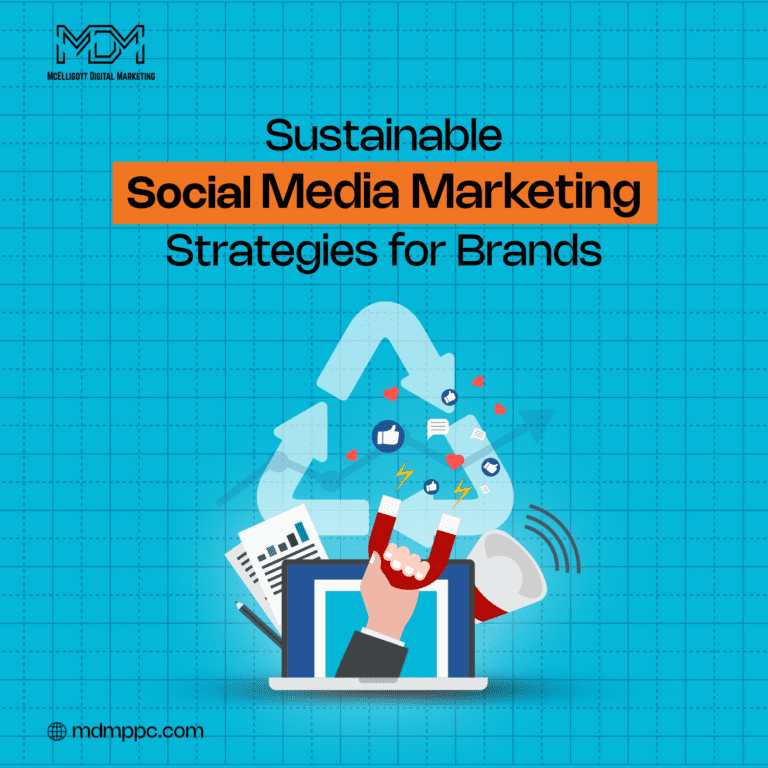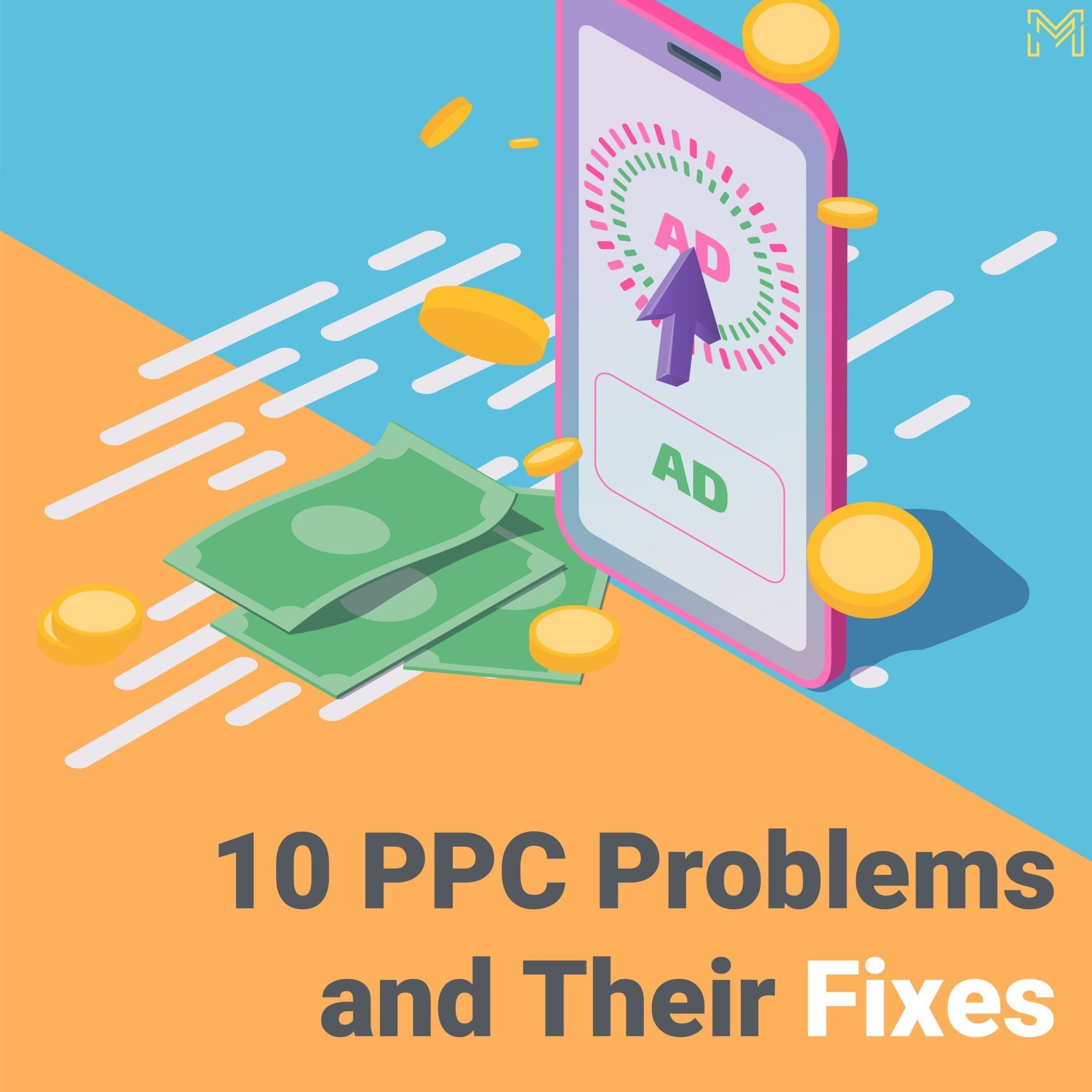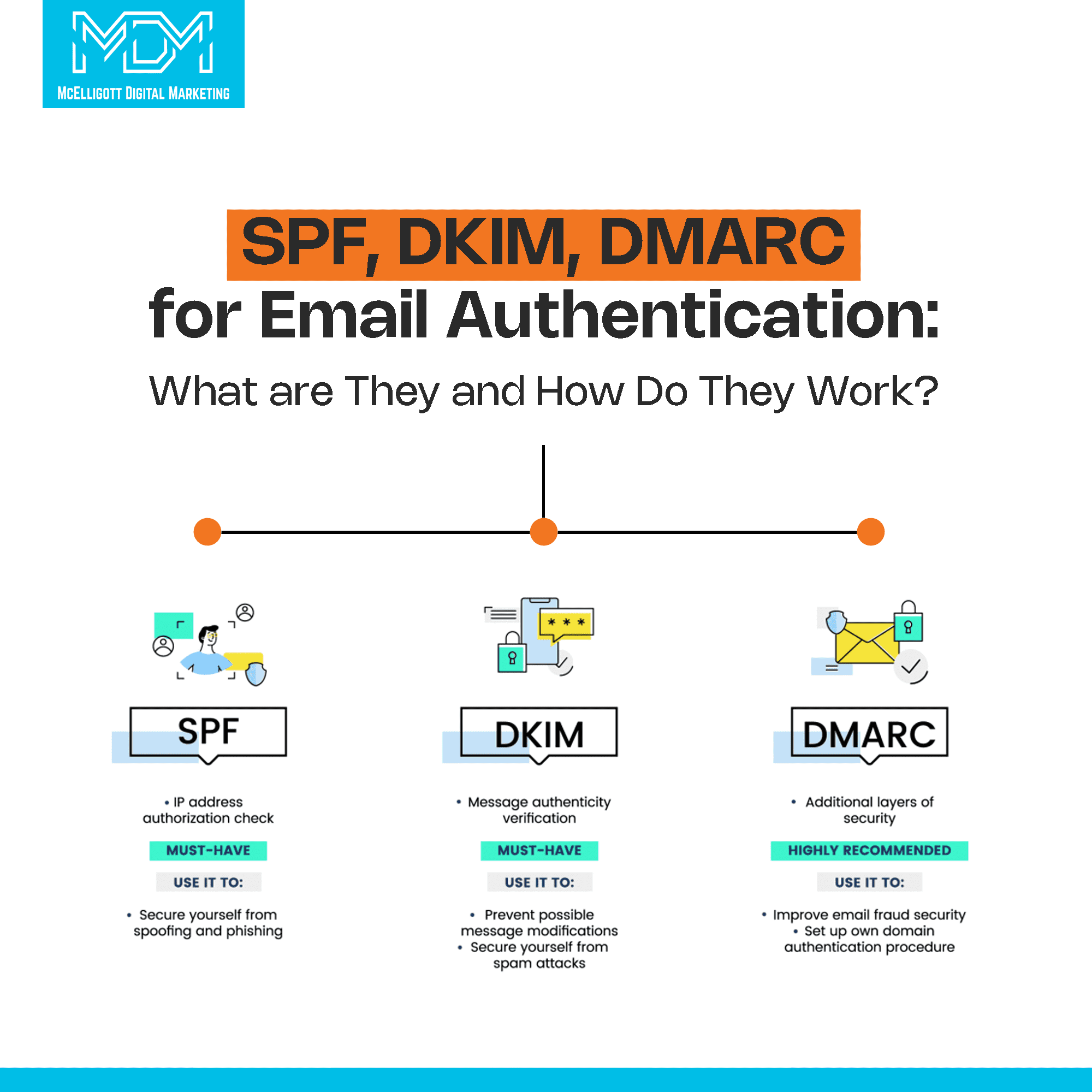In today’s climate-conscious world, brands are under growing pressure to not only talk the talk but walk the walk when it comes to sustainability. Social media—once purely a promotional platform—has now become a powerful tool for driving meaningful change. But with algorithms demanding constant content and trends shifting overnight, how can brands stay relevant without contributing to digital waste or greenwashing?
The answer lies in building sustainable social media strategies—approaches that are not only environmentally responsible but also ethical, authentic, and long-lasting. In this blog, we’ll explore how brands can balance growth with responsibility, reduce their digital carbon footprint, and lead with purpose in the ever-evolving world of social media.
Understanding Sustainable Social Media Marketing
Sustainable social media marketing goes beyond eco-friendly hashtags or one-off campaigns. It’s about building long-term, values-driven strategies that reduce harm—both to the environment and to your audience’s trust. This includes minimizing excessive content churn, avoiding clickbait or greenwashing, and focusing on authentic storytelling that aligns with your brand’s mission.
Sustainability in this context also means creating content that’s evergreen, inclusive, and mindful of digital fatigue. Instead of chasing short-term trends or vanity metrics, sustainable marketing focuses on long-term engagement, transparency, and impact. It’s about using your platform not just to sell—but to educate, empower, and inspire meaningful action.
Benefits of Sustainable Social Media Marketing
Sustainable social media marketing isn’t just good for the planet—it’s a smart, long-term strategy that benefits brands in powerful ways.
Builds Authentic Brand Trust
Today’s consumers, especially Gen Z and Millennials, want brands that walk the talk. When your sustainability efforts are consistently reflected in your social media messaging, it builds credibility. Audiences are more likely to support brands that align with their values.
Enhances Brand Loyalty
Brands that prioritize people and the planet over profit often build stronger emotional connections with their audience. Consistent, values-driven storytelling can turn one-time buyers into loyal advocates who amplify your message organically.
Reduces Burnout and Content Waste
By focusing on evergreen content and quality over quantity, sustainable strategies cut down on the pressure to constantly post. This reduces strain on content creators and minimizes digital waste, making marketing teams more efficient and intentional.
Increases Engagement Through Purpose
Purpose-driven content performs better. When brands use their platforms to share real stories, support social causes, and promote sustainability efforts, it resonates deeply with audiences—resulting in more meaningful engagement.
Long-Term Cost Efficiency
While flashy ad campaigns may give a temporary boost, sustainable strategies drive steady results over time. Reusable content, user-generated campaigns, and partnerships with like-minded creators reduce costs while amplifying reach.
Future-Proofs Your Brand
Sustainability is no longer optional. Governments, consumers, and even investors are demanding transparency and responsibility. Adopting sustainable social media practices now helps future-proof your brand in an increasingly conscious marketplace.
Strategies for Implementing Sustainable Social Media Marketing
Sustainability on social media isn’t just about what you promote—it’s about how you promote it. For brands looking to make their marketing more responsible and impactful, here are eight key strategies to help implement sustainable practices on social media.
Promote Educational and Inspirational Content
Sustainable marketing starts with awareness. Instead of focusing solely on sales, brands should create educational and value-driven content that teaches audiences about sustainability—whether it’s about conscious consumerism, climate change, or everyday eco-friendly habits.
Example: Share tips like “5 Ways to Reduce Single-Use Plastic at Home” or infographics that break down your brand’s environmental impact.
Why it works:
- Builds long-term brand trust.
- Positions your brand as a thought leader in sustainability.
- Encourages behavioral change aligned with your mission.
Engage with Eco-Conscious Communities
Don’t just talk at your audience—join their conversations. Find and participate in niche communities that prioritize sustainability, such as climate advocacy groups or low-waste lifestyle forums.
Use hashtags like #SustainableLiving, #EcoFriendlyTips, or #GreenMarketing to engage organically. Respond to comments, join cause-related threads, and even co-create content with your followers.
Why it works:
- Helps build a loyal, engaged community.
- Shows that your brand isn’t just broadcasting—it’s listening.
- Strengthens customer relationships through shared values.
Utilize Sustainable Content Creation Practices
Sustainable marketing also includes how your content is made. Avoid excessive production that wastes time, energy, or materials.
Ways to simplify and minimize impact:
- Repurpose evergreen content instead of creating from scratch.
- Use virtual shoots or minimal-production setups.
- Reduce unnecessary travel for content creation.
Tip: Use scheduling tools like Buffer or Later to optimize posting frequency and reduce digital clutter.
Why it works:
- Lowers environmental impact behind the scenes.
- Cuts unnecessary costs and production time.
- Encourages mindful content planning.
Highlight Sustainable Partnerships and Certifications
Today’s conscious consumers want proof—not just promises. Promote your partnerships with certified eco-organizations and showcase sustainability seals like B Corp, Fair Trade, or Climate Neutral Certified.
Go beyond a logo—explain what these certifications mean and how they impact your supply chain, product lifecycle, or social responsibility.
Example: “We’re proud to be Climate Neutral Certified. Here’s what that means for you and the planet.”
Why it works:
- Builds brand credibility and accountability.
- Educates your audience about third-party certifications.
- Differentiates you from greenwashing competitors.
Leverage Sustainable Influencer Partnerships
Working with influencers? Choose voices who genuinely practice what they preach. Sustainable influencers don’t just share pretty content—they share knowledge, transparency, and purpose.
Look for:
- Micro or nano influencers with high engagement and a niche eco-following.
- Creators who use their platform to discuss climate, waste reduction, ethical fashion, etc.
Collaboration Tip: Co-create long-term campaigns focused on storytelling instead of one-off product plugs.
Why it works:
- Reaches a more engaged and value-aligned audience.
- Boosts credibility through third-party advocacy.
- Strengthens authenticity and social proof.
Implement Transparent Communication
Today’s users are skeptical of vague sustainability claims. That’s why radical transparency is a must.
Be open about your progress, setbacks, and future goals. Share your sustainability roadmap—how you’re reducing emissions, improving sourcing, or cutting down waste.
Example: “We reduced our packaging waste by 42% this year—but we still have work to do on textile sourcing. Here’s our plan for 2025.”
Why it works:
- Increases consumer trust and brand loyalty.
- Humanizes your brand by admitting imperfections.
- Inspires others to take similar steps.
Encourage User-Generated Content
Empower your audience to be part of your mission. Ask them to share photos or videos of how they use your sustainable products, take part in eco-challenges, or support green initiatives.
Launch hashtag campaigns like:
- #MyEcoRoutine
- #GreenWith[BrandName]
- #SustainabilityInAction
Feature their content (with credit) on your social channels to create a sense of community and shared purpose.
Why it works:
- Boosts organic reach and engagement.
- Strengthens community involvement and loyalty.
- Reduces the need for new content creation.
Monitor and Reduce Digital Carbon Footprint
Yes—digital content has a carbon footprint too. Hosting videos, high-res images, and running ads all consume energy through data centers and devices.
Steps to reduce your digital footprint:
- Compress large images and avoid auto-playing videos.
- Optimize website and social media content for efficiency.
- Use eco-friendly hosting providers.
- Audit unused digital assets and delete what’s no longer needed.
Bonus Tip: Communicate your efforts in a post—“We reduced our digital storage by 30% to lower our carbon impact.”
Why it works:
- Shows leadership in an often-overlooked area of sustainability.
- Helps your brand become more future-focused and digitally lean.
- Reinforces a truly 360° sustainable marketing approach.
Case Studies: Brands Leading in Sustainable Social Media Marketing
Sustainable social media isn’t just a buzzword—it’s a movement. These three brands have set benchmarks by embedding sustainability at the core of their content strategy, proving that purpose-driven marketing creates real impact.
Patagonia: Authentic Storytelling
Patagonia has long been the gold standard for sustainability in business. But what sets its social media strategy apart is the brand’s unwavering authenticity.
Instead of product-heavy promotions, Patagonia uses Instagram and YouTube to highlight activism, environmental campaigns, and community stories. From protesting oil drilling to supporting grassroots conservation groups, their posts focus on purpose over profit.
What works:
- Consistent messaging aligned with brand values.
- Real stories of climate activism and environmental protection.
- Transparency about the brand’s challenges and sustainability goals.
Patagonia proves that social media can be a platform for activism—not just ads.
IKEA: Engaging Content Series
IKEA’s “#LiveLagom” campaign encouraged users to live a more balanced, sustainable lifestyle. Rather than pushing products, the brand shared tips for energy-saving, waste reduction, and mindful living—backed by customer stories and community participation.
They created a multi-platform content series, including how-to videos, sustainability challenges, and collaborations with influencers who embody low-waste lifestyles.
What works:
- Educational yet entertaining content.
- Encouraging community participation with user-generated content.
- Long-term campaign with a clear sustainability mission.
IKEA’s approach shows how sustainable messaging can be both engaging and actionable.
Allbirds: Transparency in Communication
Allbirds takes sustainability seriously—and they make sure their audience knows exactly how. From carbon footprint labels on their products to posts breaking down their supply chain practices, Allbirds uses social media to foster radical transparency.
They also leverage Twitter and LinkedIn to update followers on material innovations, carbon offsets, and collaborations (like their Adidas sustainability partnership). This builds trust and shows measurable progress.
What works:
- Transparent storytelling backed by data.
- Regular sustainability reports shared in digestible formats.
- Conversations with their community around ethical fashion.
Allbirds demonstrates that sustainability and business transparency go hand in hand—and that social media is the perfect tool for sharing that journey.
Challenges and Considerations in Sustainable Social Media Marketing
While sustainable social media marketing offers long-term value, it comes with its own set of challenges—especially for brands transitioning from traditional strategies.
Here are some key considerations to navigate:
Risk of Greenwashing Accusations
One of the biggest concerns in sustainable marketing is being perceived as greenwashing—making claims about environmental responsibility that aren’t backed by real action.
Even well-meaning brands can face backlash if their messaging lacks transparency or feels performative. To avoid this, brands must back every sustainability claim with data, action, or proof, such as certifications, supply chain audits, or progress reports.
Slower ROI Compared to Aggressive Campaigns
Sustainable campaigns often focus on long-term trust and education, rather than quick sales or viral reach. This can lead to slower short-term ROI, which may not align with traditional KPIs or executive expectations.
Brands must adjust their performance metrics to value engagement quality, brand trust, and customer lifetime value, instead of just clicks and conversions.
Content Creation Demands and Team Alignment
Sustainable content often requires collaboration across departments—from marketing to sourcing to product teams. Without internal alignment, the messaging can fall flat or feel inconsistent.
Additionally, creating content that’s both educational and engaging takes more planning and intentionality, which may stretch smaller teams.
Audience Skepticism and Fatigue
Today’s audience is more eco-aware—and more skeptical. They’ve seen too many brands make empty promises or jump on sustainability trends for PR value. This means your content must be genuine, informative, and humble.
Also, avoid overwhelming audiences with negativity. Balance educational posts with inspiring stories, real solutions, and community wins.
Keeping Up with Evolving Standards
Sustainability is a moving target. What’s considered eco-friendly today might be outdated tomorrow. Brands must stay informed about new technologies, regulations, certifications, and best practices to maintain credibility.
Regular training, expert consultations, and audience feedback loops are key to staying relevant and responsible.
Conclusion
Building a sustainable social media strategy isn’t just good for the planet—it’s a smart move for long-term brand growth. By promoting purposeful content, engaging authentically, and reducing your digital footprint, your brand can connect with conscious audiences while staying true to its values.
Consistent storytelling, transparency, and community-driven campaigns help build trust and drive meaningful engagement—without waste or performative efforts.
Start small, stay consistent, and evolve with your audience and the planet in mind.
Looking to make your social media more sustainable?
Start building your impact-first strategy today.
FAQs
1. What is sustainable social media marketing?
It’s a strategy focused on long-term impact, ethical storytelling, and reducing digital waste—while staying true to brand values.
2. How can brands avoid greenwashing?
Be transparent and honest. Support every sustainability claim with real data, certifications, or measurable progress.
3. Can small businesses implement sustainable strategies?
Yes! Even with limited resources, small brands can create meaningful impact through thoughtful content and genuine engagement.
4. What kind of content performs best sustainably?
Educational, inspiring, and community-driven content tends to resonate most—especially when it aligns with real-world actions.





